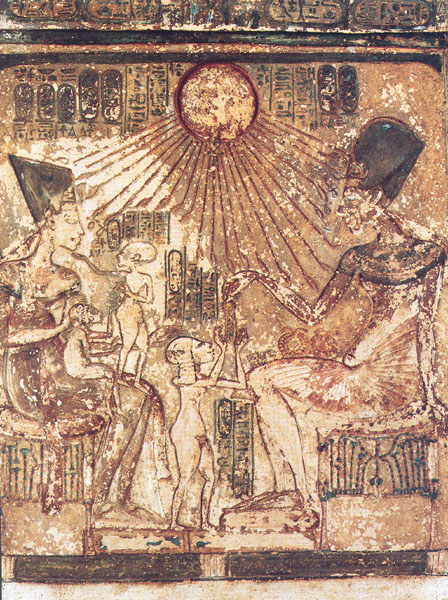Image Details

Scala/Art Resource,NY
Akhenaten, his wife, Nefertiti, and their three daughters worship their universal god, the sun disk Aten, in this painted limestone stela found near Tell el-Amarna. Scholars have often noted the parallel language found in Psalm 104 and in Akhenaten’s famous 14th-century B.C.E. hymn to Aten. In the hymn, Aten is praised as the sole creator and sustainer of all things: “How manifold is that which you make oh sole god, with no other except him! You alone create the earth to your desire: people, cattle, and all flocks, everyone on earth who walks on feet, everyone in the heavens flying with their wings You give every man to his place and make what they need: every one having his food, his lifetime reckoned.” In similar fashion, Psalm 104 exalts the creator Yahweh: “Countless are the things you have made, Lord; by your wisdom you have made them all; the earth is full of your creatures All of them look to you in hope to give them their food when it is due” (Psalm 104:24–27).
According to author Michael Homan, parallels between the language of the Bible and the images and ideas of Egyptian mythology help explain both the form and the function of Yahweh’s Tabernacle because they indicate the Near Eastern context out of which Israelite worship emerged..
